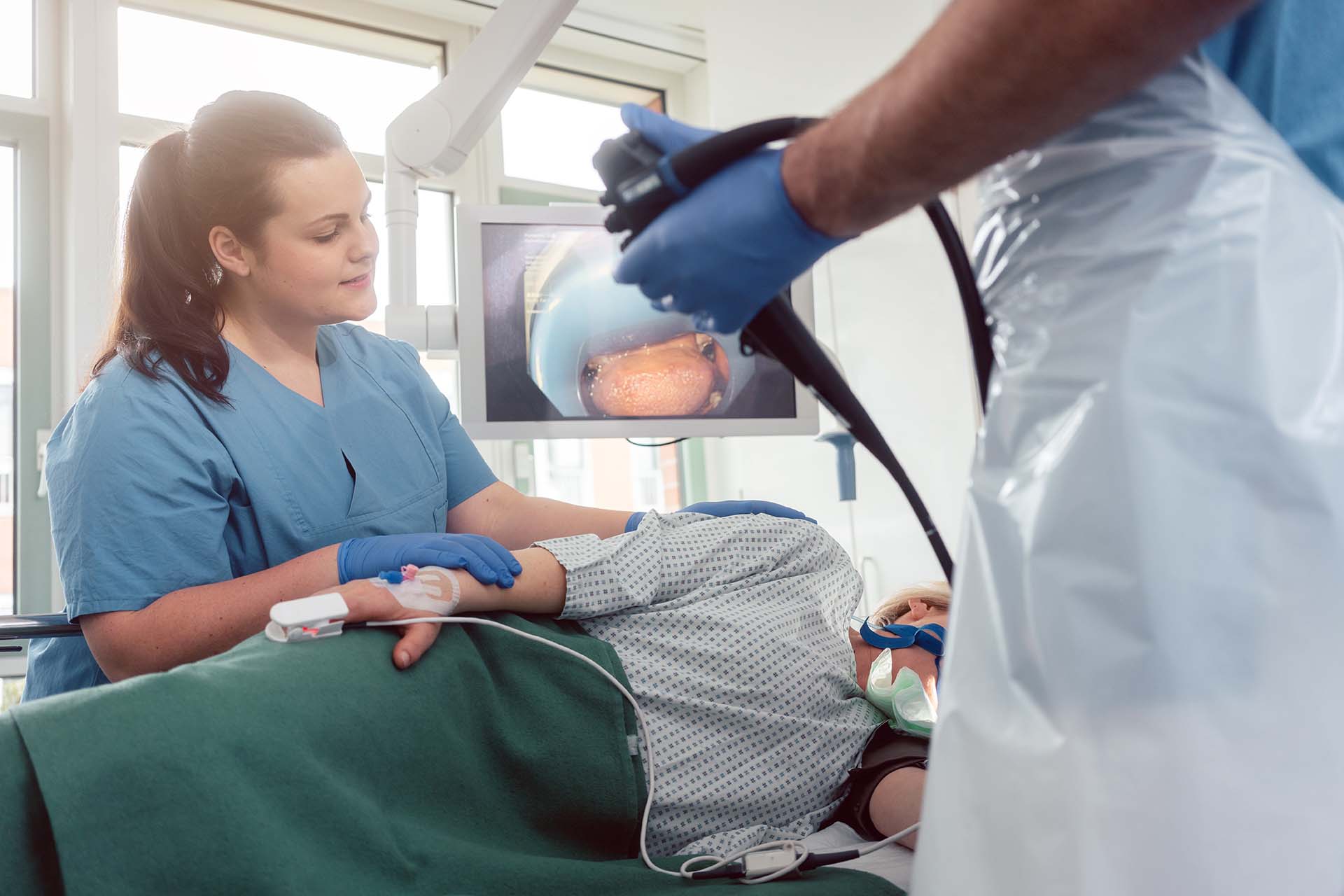
Upper Endoscopy (EGD)
Information and Resources for EGD Patients
About Upper Endoscopy (EGD)
Also known as esophagogastroduodenoscopy, EGD is a minimally invasive procedure that allows a physician to examine the lining of the esophagus, stomach, and upper small intestine with an endoscope (a lighted, flexible tube with a camera attached). An EGD can be used to diagnose and sometimes treat problems associated with acid reflux, difficulty swallowing, ulcers, abnormal growths, obstructions, inflammation, celiac disease, and hiatal hernia.
To effectively perform an EGD, the upper GI tract must be completely empty. Complete instructions for preparing for an Upper GI Endoscopy should be reviewed well in advance of the procedure. Patients with certain health conditions may require special instructions.
IMPORTANT REMINDER:
Your procedure will take place at the GREEN MOUNTAIN SURGERY CENTER in Colchester. *** We do not perform procedures at our office. ***
If you are on insulin or other medications for diabetes and/or pain medications, please CHECK with your REGULAR physician for specific instructions. In almost all cases, you MUST let us know if you take blood thinners or GLP-1 drugs (Such as: Ozempic, Victoza, Trulicity, Mounjaro, Rybelsus), as these must be held before you have your procedure.
Although quite rare, most complications are related to sedation administration (cardiac and respiratory problems), bleeding, perforation, or infection. These complications may require additional treatment such as hospitalization and/or blood transfusions.
EGD Procedure Steps
Before
During your pre-op, you will have an IV placed and your health history reviewed. The doctor will then enter the room and ask for your consent. Before the procedure begins, you will be administered sedation medicine through your IV that will allow you to be comfortable and asleep during the procedure.
During
The endoscope is inserted into the mouth, and then advanced gently through the esophagus to the stomach and duodenum (the first part of the small intestine). The lining of the esophagus, stomach, and upper duodenum is examined, and if necessary, biopsies can be taken through the endoscope. Patients do not feel gastrointestinal biopsies. If there is difficulty swallowing and a narrowing of the esophagus, it can be dilated during the upper endoscopy.
After
After the procedure, patients rest in the recovery room while the sedative wears off. Driving is not allowed for 12 to 24 hours, so patients will need a ride home.
Resting for the remainder of the day is advised. Any soreness in the throat disappears within 24 to 48 hours. Regular activities may be resumed the following day.
Prep Instructions
Please download and review the relevant instructions document below – it contains important information about your upcoming procedure.
EGD Prep Instructions
For more information, visit our Procedure Prep Instructions page.
Still have questions?
Understandably, you may have questions about scheduling, your upcoming appointment, payment, and other topics related to our practice. Visit our “Frequently Asked Questions” page for answers to commonly asked questions.